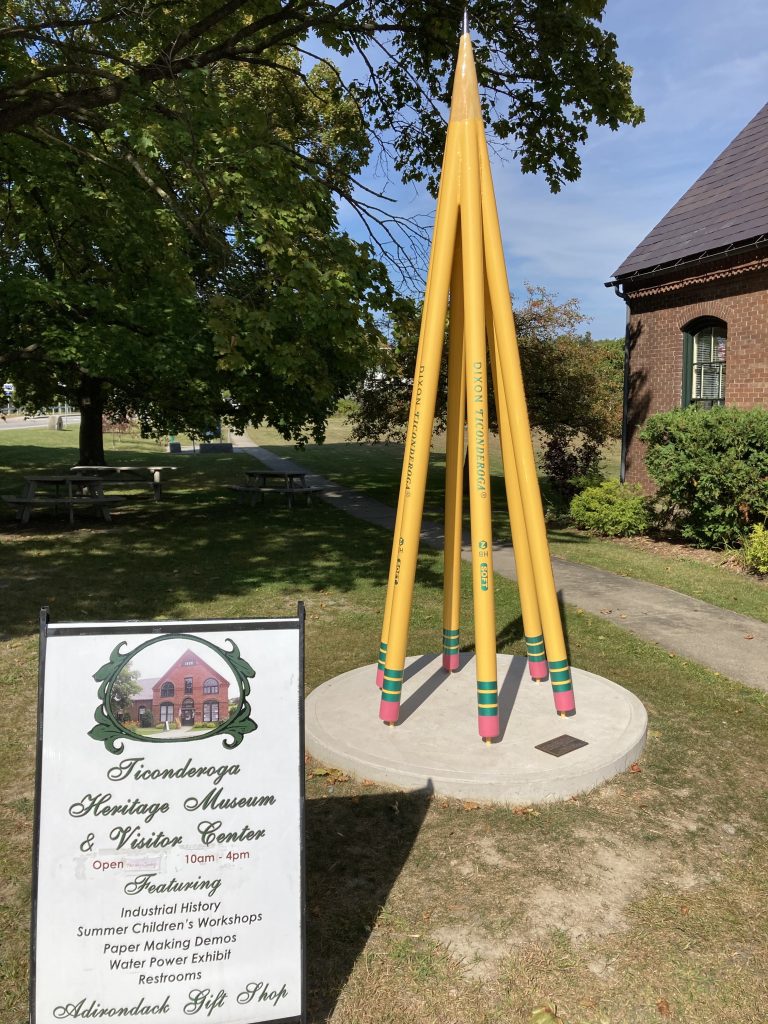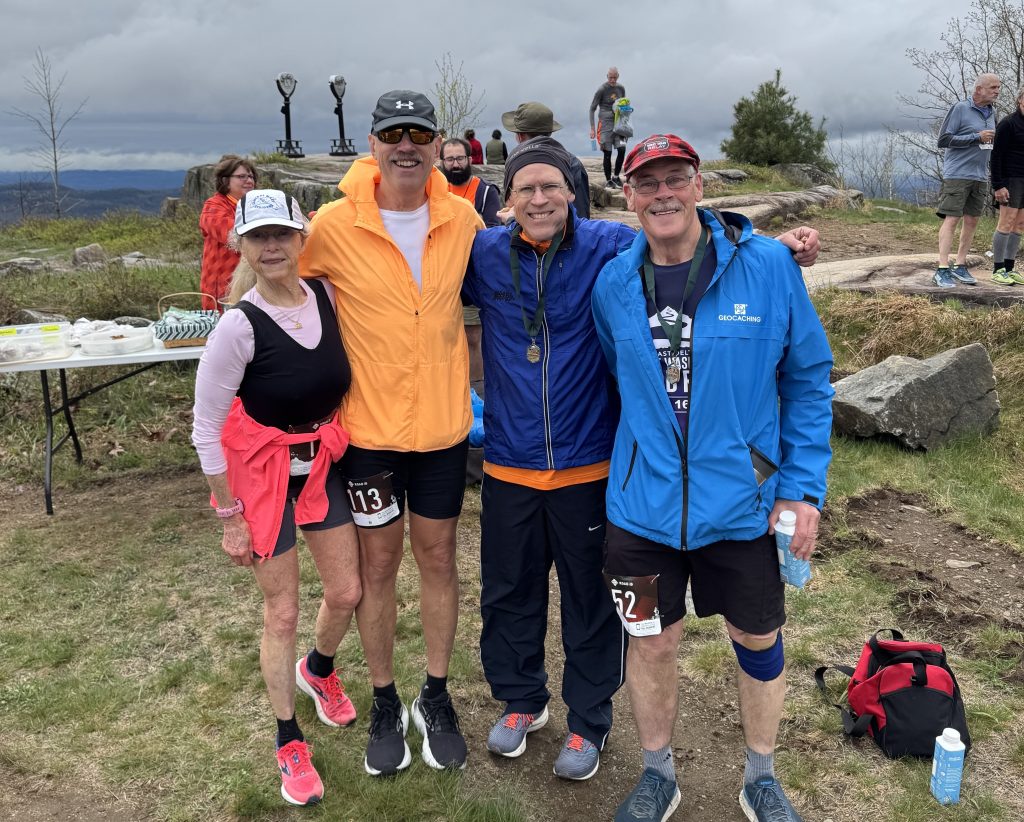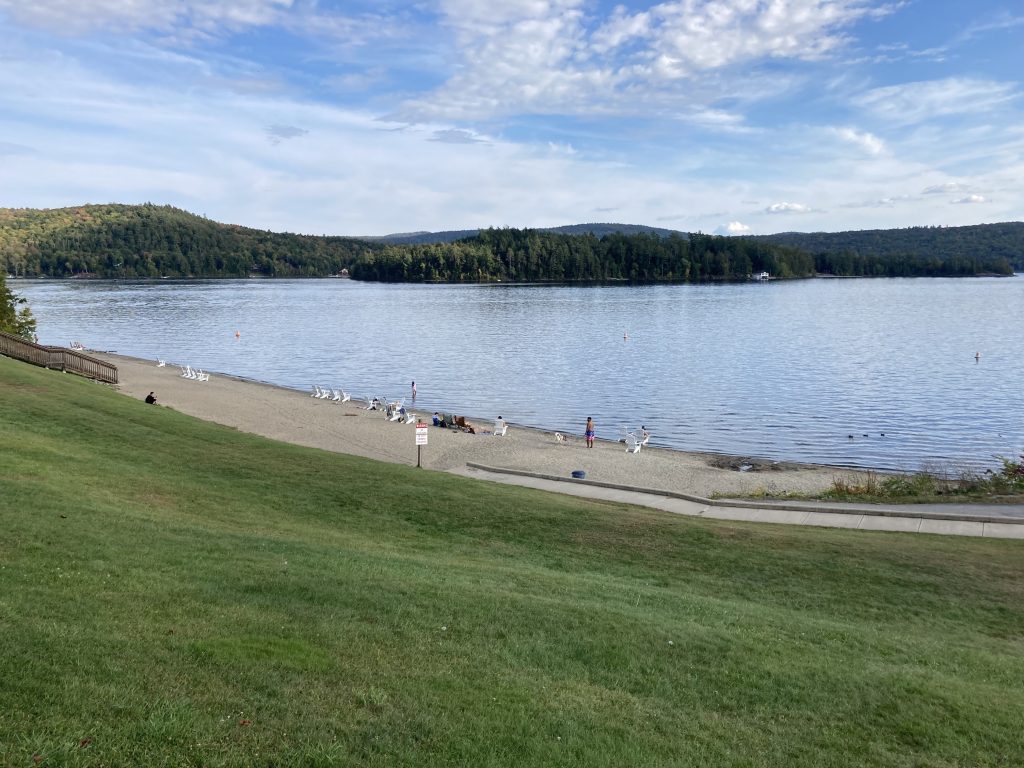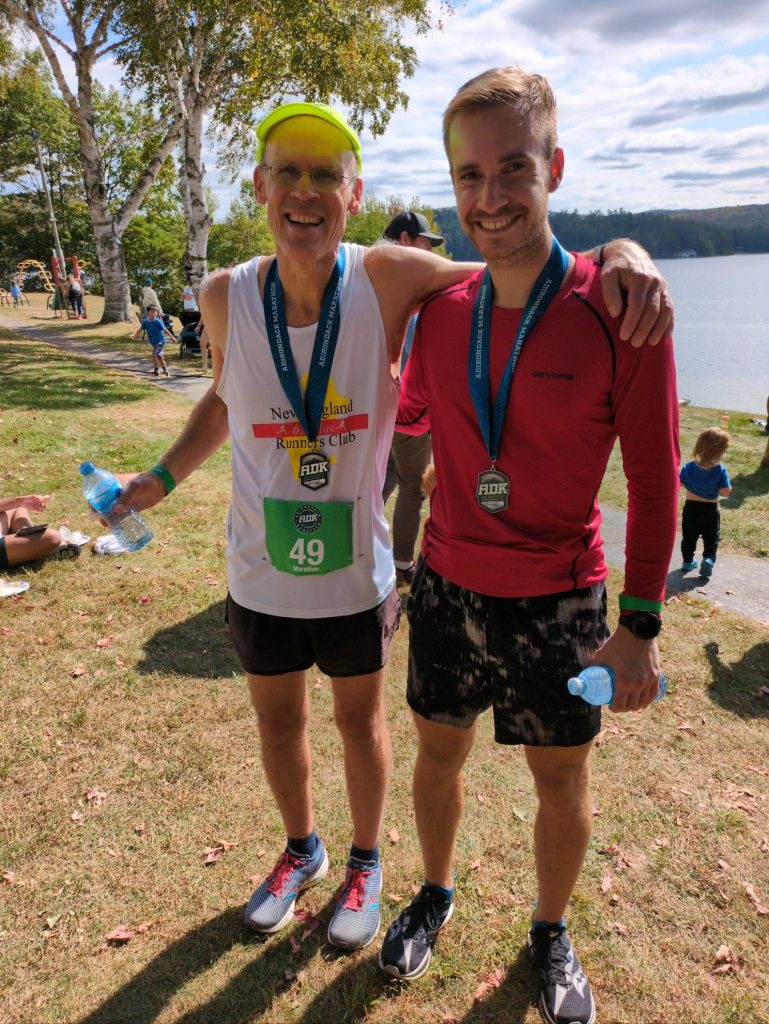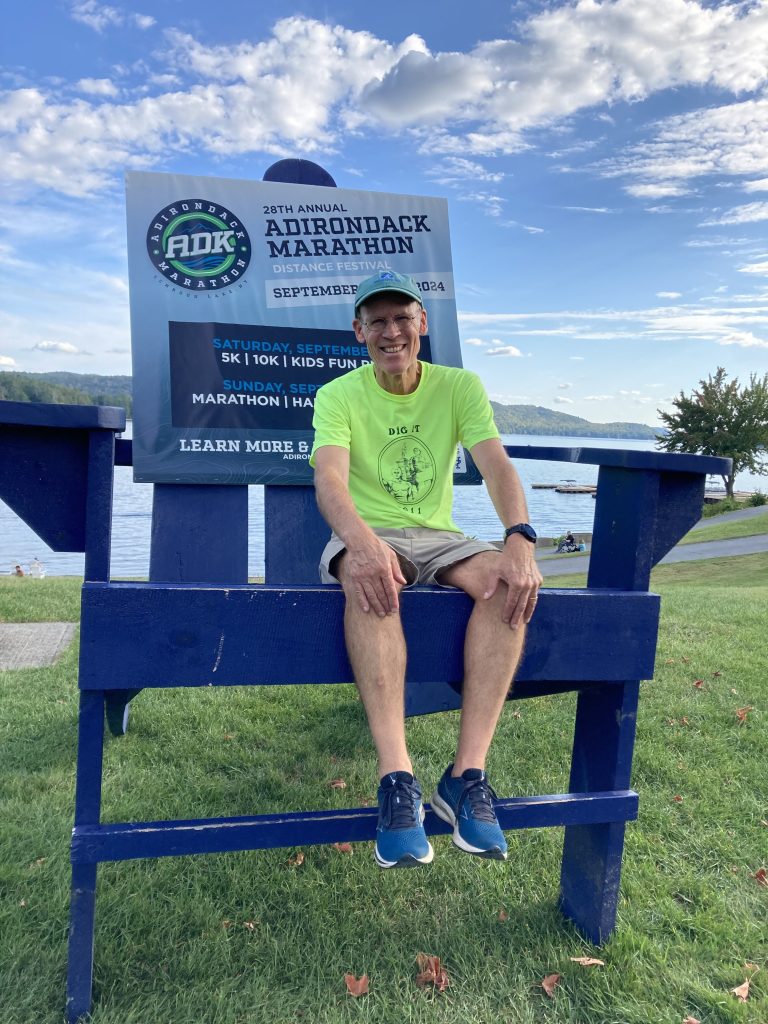Trying Something New
by Jim Flint
While CVR races are closest to my heart, I’m starting to mix a few Southern Adirondack and Capital District races into my running calendar. The venues in New York are an hour or so drive from our home in West Rutland. Crossing the state line brings me back to some of the places where I raced during high school and college.
This year’s race season kicked off in my hometown of Salem, New York, at the 44th annual April Fools Race. I first ran the April Fools 10k in 1980 as a college junior. The event now features the classic 10k distance, a kids’ mile run, and a 5k race. The 5k course follows my high school cross country training route. It’s a fun challenge to run the 10k and 5k races back-to-back.
The Adirondack Runners Club is based in Glens Falls. Last year I entered a couple of Club races: the 7-mile Run to the Lake (George), in June, and the Spud Run 5k, in October. The Run to the Lake (coming up on June 21) is a point-to-point race starting at Adirondack Community College, in Queensbury, and ending at The Million Dollar Beach, in Lake George Village. The Spud Run is a hilly course on country roads in Hartford, New York. Details are at https://adirondackrunners.org/.
The Adirondack Runners Club has a Grand Prix Race Series with short-distance and long-distance divisions. I’ve run two races this year in the long-distance series, the Helderberg to Hudson Half Marathon, on April 12, and the Prospect Mountain Race, on May 10. The half marathon, which finished in Albany, followed a downhill point-to-point route along a rail trail. Over 1,600 runners started out in the snow and ended in light sprinkles.
Prospect Mountain was my first-ever uphill race. Darrel Lassell picked me up on his way from Williamstown to Lake George, shared helpful tips, and introduced me to several mountain-running friends. The race was well organized. A nice spread of donated refreshments awaited all who conquered the 5.7-mile route to the summit and 1600+ feet of elevation gain.
On September 28, I plan to run the Adirondack Marathon, in Schroon Lake. The race is part of the Adirondack Runners long-distance race series. A hometown friend from Salem, New York, Sandy Adams, told me about the marathon, which I ran for the first time last year. Sandy raved about how the entire community of Schroon Lake turned out to volunteer. The 26.2-mile course around the lake is completely closed to traffic. Last year’s race was on September 22. It was my first marathon since New York City, in 2017.
Although a road marathon wasn’t in my plans at the start of 2024, I was intrigued by the thought of doing an ultramarathon. In his running blog, Joe Merrill shared his 2023 ultra experience at “Six Hours on Lovers Lane” in Chester, Vermont. The Chester race was an hour away from West Rutland, low-key, and affordable. Having never done an ultra, I emailed Darrel Lassell to get some training recommendations.
“Fuel and hydrate every lap,” Darrel advised. “Practice eating and drinking so you know what your stomach can handle. I eat a Fig Newton or a handful of chips or wedge of watermelon each lap, and sometimes a quarter PB+J sandwich (some people have gels and protein drinks).”
“If it is hot, I drink 500ml of water or Gatorade every hour,” Darrel continued. “I carry a handheld and sip all the time. I walk all the hills. When I run on flat or downhill, I pick a pace that I can manage all day. When things get tough, slow down. Practice running on tired legs at just a slow jog.”
Following Darrel’s advice, I started training June 29 on a 2.9-mile loop that included sections of bike path, gravel, pavement, and grass, plus a single-track section of trail in the West Rutland Forest Recreation Area. An aid station on our front porch provided water, electrolyte, and nutrition. Fig Newtons, shot blocks, tapioca and strawberries, banana, and mashed potatoes cooked in broth (a Joe Merrill tip) fueled the training run. Using a run/walk approach, I completed four loops (11.5 miles) in two hours.
Over the next three weeks, one loop was added per week. The morning long runs adapted me to heat, humidity, and pesky deer flies. On July 20, I covered 21.5 miles (seven loops) in four hours. On July 28, I did my final training run on a slightly easier 1.75-mile loop. I ran the loop 13 times, alternating the direction, and covered 24 miles in 4 hours and 14 minutes.
I felt ready for the six-hour ultra in Chester on August 10, but Hurricane/Tropical Storm Debby had other plans. The Chester ultra was canceled due to potential flooding and trail damage. As an alternative, I did a Do It Yourself (DIY) ultra. Part of the forest trail in West Rutland was a bit soggy, so I chose a hilly three-loop road course, plus one trail loop, returning at the end of each loop to the front porch aid station. My long slow distance (LSD) ultra training paid off. I finished the 26.5-mile run/walk in 4:08:45, including the aid stops.
Best of all, I didn’t feel beat up after the DIY ultra. Looking at the calendar, the Adirondack Marathon was six weeks away, with plenty of time to prepare. I plugged the Adirondack Marathon into the Garmin calendar app on my phone and followed the Garmin Coach’s suggested workouts. The marathon training base was already well established. My longest training run during the six weeks after the DIY ultra was 15-1/2 miles.
The week before the marathon, I ran into John and Dot Martin at the Tunbridge Fair. Dot was the second woman to finish the 2014 Adirondack Marathon. Her time was 3:28:16. She and John remembered the challenging hills in the first half of the race, the scenic vistas along the lake, and the sunny final miles on Route 9. They provided just the right amount of encouragement and helpful tips a few days before the race.
The marathon was on Sunday morning, September 22, starting at 9 a.m. Barb and I drove to Schroon Lake on Saturday to pick up my bib. On the way, we enjoyed a stop in Ticonderoga at the historical museum and welcome center. We stayed at the Maple Leaf Motel, on Route 9, about a mile north of the marathon start and finish. Foregoing the pasta dinner, we enjoyed delicious pizza at Decesare’s family restaurant, about a mile south of the race start.
On race day morning, I got up early and cooked scrambled eggs in the microwave at the motel. Orange juice and a ciabatta roll with olive oil completed the pre-race breakfast. The course started on Route 9 in downtown Schroon Lake and ran north for a couple of miles, before turning east and south along the back side of the lake. I carried a sleeve of shot blocks and a GU gel with me. The plan was for Barb to replenish my GU and provide a bottle of electrolyte at Mile 18.
I was pleased that a 3:30 marathon pacer, Paul from Texas, had volunteered. There was an outside chance I could stay with the pace group, even with the hills. My heart rate started high, reaching 164 bpm during the first mile, then settled into the 130s in mile two. The first major hill went from mile 4 to mile 6, with a descent from mile 6 to mile 8. A series of rolling hills tested my resolve from mile 8 to mile 12. I hung on, barely, to the pace group.
Emerging from the forested roads, a cruising downhill took us to the 13.1-mile mark along the lake, which I reached at one hour and 46 minutes. The pace group was ahead but still in sight. I grabbed a packet of Untapped Maple at the aid station and settled into the easier miles along the lakeshore, running at just under 8 minutes per mile.
Nearing mile 18, I thought about Barb and the electrolyte. The temperature was in the mid-60s as I turned into the Word of Life camp complex. Barb was waiting, a welcome sight 100 meters before the aid station. I walked a minute with Barb, downed the electrolyte and a GU gel, and grabbed another GU and water at the aid station.
Picking up my feet, I started running again. And then it happened. As I rounded the next curve, a large group of Word of Life campers spotted me. Surprisingly, (I later found out that it was Barb’s doing), they were shouting my name, then reaching out in a line to give high fives. Their energy was a huge boost with eight miles left in the race.
Mile 19 to mile 22 involved a gradual climb, with the road stretching out in the distance. Aid stations staffed with friendly volunteers were set up every mile. I focused on an interval approach, running a mile and walking through each aid station, making sure to stay hydrated and take in some fuel. My pace was slowing a bit, but staying under 8:45 per mile. I recovered on the downhill in Mile 23. A wave of emotion hit when I knew I was going to make it. Uphill again in Miles 24 and 25, then a slight downhill in Mile 26.
I pushed the pace a little the last half mile, turned the final corner, and ran 100 meters to cross the finish line. Starting the race, I had hoped for a time between 3:30 and 3:45. My second half was one hour and 49 minutes, just three minutes slower than the first half, yielding a net time of 3:35:05.
Checking my body and mind, the marathon experience felt surreal. Schroon Lake sparkled in the sunlight below the finish line. Slowly I eased my way down a grassy slope to the beach. I gingerly pulled off my running shoes and socks and felt the sand on my feet. The water was warm on top and cool below. I walked out to my hips, paused for a moment of gratitude, and fell into the lake’s embrace. This September, I’ll be back again for another try.
For anyone interested in a scenic, hilly, and fun early fall marathon, check out the course and registration info at https://www.adirondackmarathon.org/. See you in September!
